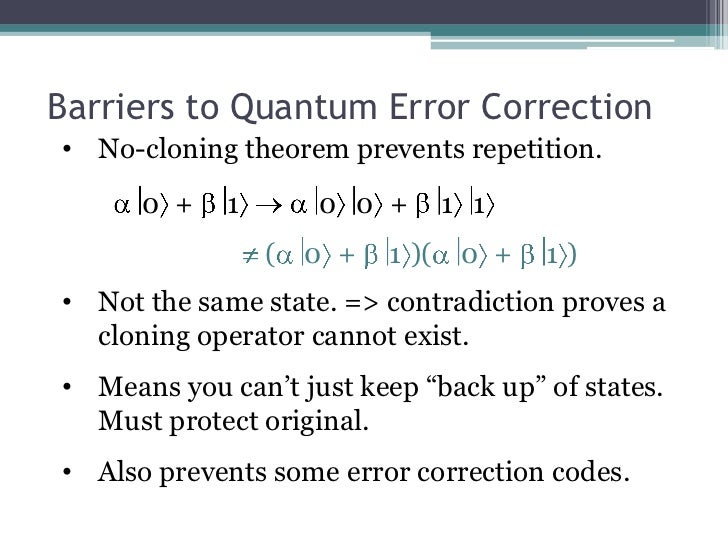

This opens the door for employing a large variety of many-body effects to combat errors. Beyond the inherited error correcting characteristics, topological systems protect the encoded information with the presence of the Hamiltonian that energetically penalises transformations between states. In particular, he defined a Hamiltonian whose eigenstates are also states of a quantum error correcting code.
ALEXEI KITAEV QUANTUM ERROR CORRECTION CODE
That's the problem it solves.The birth of topological quantum computation took place when Alexei Kitaev (2003) made the ingenious step of turning a quantum error correcting code into a many-body interacting system. That's the whole point, and the whole non-trivial thing that the theorem shows. "PHYS771 Lecture 14: Skepticism of Quantum Computing": «The entire content of the Threshold Theorem is that you're correcting errors faster than they're created. "Roads towards fault-tolerant universal quantum computation". "High-threshold universal quantum computation on the surface code". PHYS771: Quantum Computing Since Democritus.

"Lecture 14: Skepticism of Quantum Computing". ^ Aaronson, Scott Granade, Chris (Fall 2006).Quantum Computation and Quantum Information (10th anniversary ed.). Proceedings of 37th Conference on Foundations of Computer Science. "Fault-tolerant quantum computation by anyons". "Fault-Tolerant Quantum Computation with Constant Error Rate". von (), "Probabilistic Logics and the Synthesis of Reliable Organisms From Unreliable Components", Automata Studies. At a 0.1% probability of a depolarizing error, the surface code would require approximately 1,000-10,000 physical qubits per logical data qubit, though more pathological error types could change this figure drastically. That's the problem it solves." Threshold value in practice Ĭurrent estimates put the threshold for the surface code on the order of 1%, though estimates range widely and are difficult to calculate due to the exponential difficulty of simulating large quantum systems. "The entire content of the Threshold Theorem is that you're correcting errors faster than they're created. According to quantum information theorist Scott Aaronson:

Then, one can use these better gates to recursively create even better gates, until one has gates with the desired failure probability, which can be used for the desired quantum circuit. Though these "better gates" are larger, and so are more prone to errors within them, their error-correction properties mean that they have a lower chance of failing than the original gate (provided p is a small-enough constant). The proof strategy for quantum computation is similar to that of classical computation: for any particular error model (such as having each gate fail with independent probability p), use error correcting codes to build better gates out of existing gates. Threshold theorems for classical computation have the same form as above, except for classical circuits instead of quantum. O ( log c ( p ( n ) / ε ) p ( n ) ), and given reasonable assumptions about the noise in the underlying hardware. Threshold theorem for quantum computation : 481 : A quantum circuit on n qubits and containing p(n) gates may be simulated with probability of error at most ε using Quantum Computation and Quantum Information, by Michael Nielsen and Isaac Chuang, gives the general framework for such a theorem: The formal statement of the threshold theorem depends on the types of error correction codes and error model being considered. Surprisingly, the quantum threshold theorem shows that if the error to perform each gate is a small enough constant, one can perform arbitrarily long quantum computations to arbitrarily good precision, with only some small added overhead in the number of gates. Since a quantum computer will not be able to perform gate operations perfectly, some small constant error is inevitable hypothetically, this could mean that quantum computers with imperfect gates can only apply a constant number of gates before the computation is destroyed by noise. The key question that the threshold theorem resolves is whether quantum computers in practice could perform long computations without succumbing to noise.


 0 kommentar(er)
0 kommentar(er)
